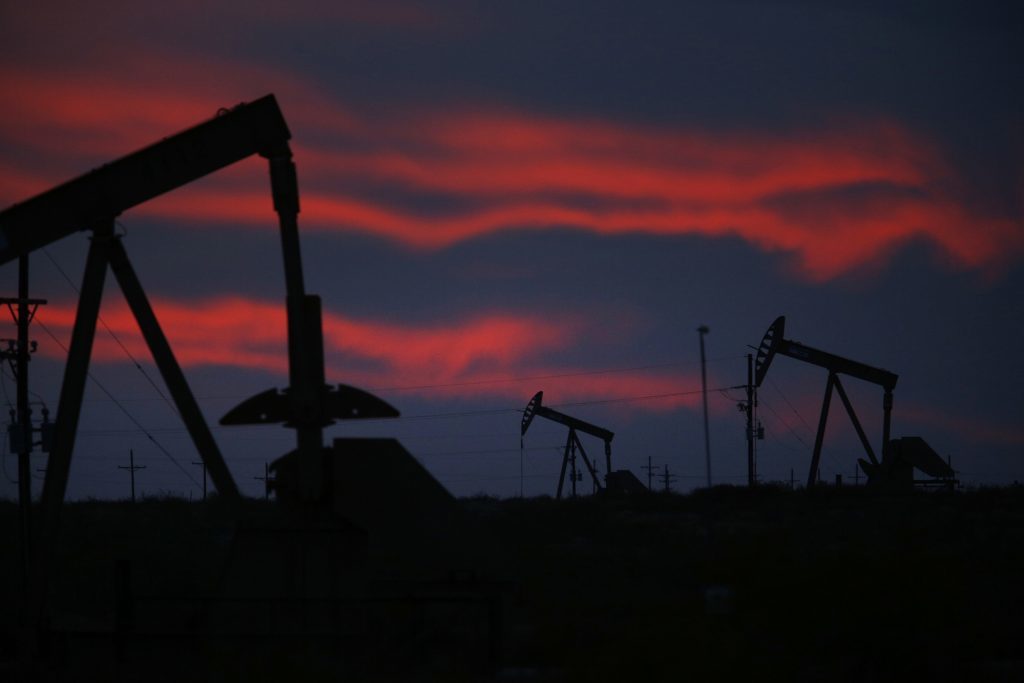
Oil headed for its longest run of losses in almost four months as Saudi Arabia and Russia said they are discussing reviving output to ease consumer anxiety after prices jumped to levels last seen in 2014.
Brent futures that traded above $80 a barrel last week slumped below $75 in London Monday, while crude in New York dropped 3.1 percent. Saudi Arabia and Russia signalled they’ll restore some of the output they halted as part of a deal between OPEC and its allies that went into effect in January last year. Still, with opposition from several producers, it’s not clear whether the group will reach a consensus when it meets in Vienna next month.
Oil earlier in May rose to a 3 1/2-year high after U.S. President Donald Trump decided to renew sanctions on Iran and as plunging Venezuelan output fueled concerns over disruptions. With the Organization of Petroleum Exporting Countries and its partners said to have cleared a market surplus despite record American production, traders now are weighing whether Saudi Arabia and Russia will implement their plan without finding a compromise with allies.
“The latest signal from OPEC and Russia cooled down expectations for the group’s cuts, which have been a major factor boosting crude prices since late last year,” Satoru Yoshida, a commodity analyst at Rakuten Securities Inc., said by phone from Tokyo. “If OPEC and allies decide at the June meeting to maintain their production cuts through December and ease anxiety among investors, crude prices may rebound.”
High Prices
West Texas Intermediate for July delivery fell as much as $2.08 to $65.80 a barrel on the New York Mercantile Exchange and traded at $66.20 at 1:31 p.m. in Tokyo. There is no settlement Monday because of the U.S. Memorial Day holiday. Trades will be booked Tuesday for settlement purposes. Prices dropped $2.83 to $67.88 on Friday, the biggest loss since July 5. Total volume traded was about 150 percent above the 100-day average.
Brent futures for July settlement dropped as much as $1.95 to $74.49 a barrel on the London-based ICE Futures Europe exchange. Prices on Friday lost $2.35 to $76.44. The global benchmark crude traded at a $8.82 premium to WTI for the same month, on course for the widest close since March 2015.
Futures for September delivery fell 4.1 percent to 457.7 yuan a barrel on the Shanghai International Energy Exchange. The contract dropped 1.6 percent to 477.4 yuan on Friday.
Demand Worries
Higher crude prices are starting to affect demand, Daniel Yergin, vice chairman of consultant IHS Markit Ltd., had said on Friday. He was echoing concerns voiced a week earlier by the International Energy Agency, which advises major oil-consuming nations.
OPEC and its allies are likely to gradually revive oil output in the second half of the year, Saudi Energy Minister Khalid Al-Falih said at the St. Petersburg International Economic Forum in Russia last week. He and Russian counterpart Alexander Novak said earlier that while scaling back the supply caps is “on the table,” no decision has been made.
Excess cuts amounted to about 740,000 barrels a day in April, according to estimates from the IEA. Without compensating supply from other members, this number looks likely to expand as the U.S. reimposes sanctions on Iran and the collapse of Venezuela’s oil industry worsens.
Separately, President Vladimir Putin said oil prices at $60 fully suit Russia and the country doesn’t want them to spiral higher. Anything above that level “can lead to certain problems for consumers, which also isn’t good for producers,” he said. OPEC and his nation don’t plan to stick to existing output cuts, he said.
Saudi Arabia and Russia’s potential policy shift doesn’t materially change Goldman Sachs Group Inc.’s bullish oil outlook, the bank’s analysts including Damien Courvalin said, reiterating the bank’s forecast of Brent at $82.50 per barrel in the third quarter. Drilling rigs targeting oil in the U.S. rose by 15 to 859, the highest since March 2015, according to Baker Hughes data on Friday. Hedge funds trimmed their net-long positions — the difference between bets on a price increase and wagers on a drop — in Brent crude by the most in almost a year.
Recommended for you
